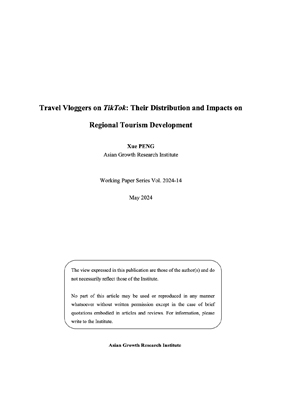Travel Vloggers on TikTok: Their Distribution and Impacts on Regional Tourism Development

| 執筆者 | 彭 雪 |
|---|---|
| 発行年月 | 2024年 5月 |
| No. | 2024-14 |
| ダウンロード | 1476KB |
内容紹介
Anecdotal evidence from multiple cities suggests that short videos boost destination awareness and subsequently, tourism visitation. TikTok has now become one of the most popular short video platforms and accordingly, has attracted intensive attention from the tourism industry and scholars querying the implications. While previous tourism studies have primarily concentrated on the platform’s viewers and user-generated content, studies focused on travel vloggers are scarce, and their roles in tourism development remain understudied. This study utilizes big data from TikTok in China and employs spatial analysis to investigate the distribution characteristics and impacts of travel vloggers in regional tourism development. The spatial analysis methods utilized include Moran’s I index and Geodetector. The Moran’s I analysis results indicate that cities with a similar number of travel vloggers tend to be clustered; however, this tendency is higher with regard to non-travel-themed vloggers. The Geodetector results reveal that travel vloggers significantly influence provincial tourist arrivals, demonstrating larger impacts than conventional variables such as scenic areas, travel agencies, and transport infrastructure. The most crucial factor contributing to the impact of travel vloggers is their number. This is followed by their productivity in terms of the number of videos they upload, which wields a larger impact than the shares or likes they receive. Within the productivity metric, the cumulative productivity of travel vloggers from previous years exerts a higher influence than their recent productivity from the past year. Interestingly, the number of their followers does not necessarily impact regional tourist arrivals. These insights can assist policymakers and practitioners in leveraging vloggers for regional tourism development.
